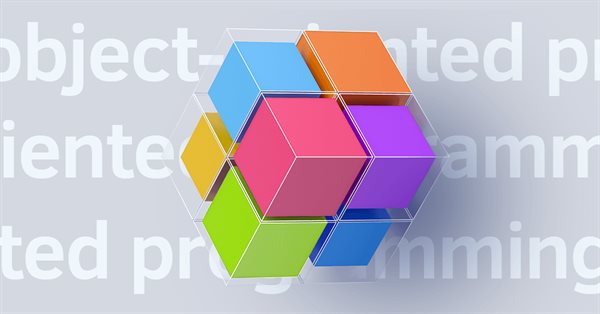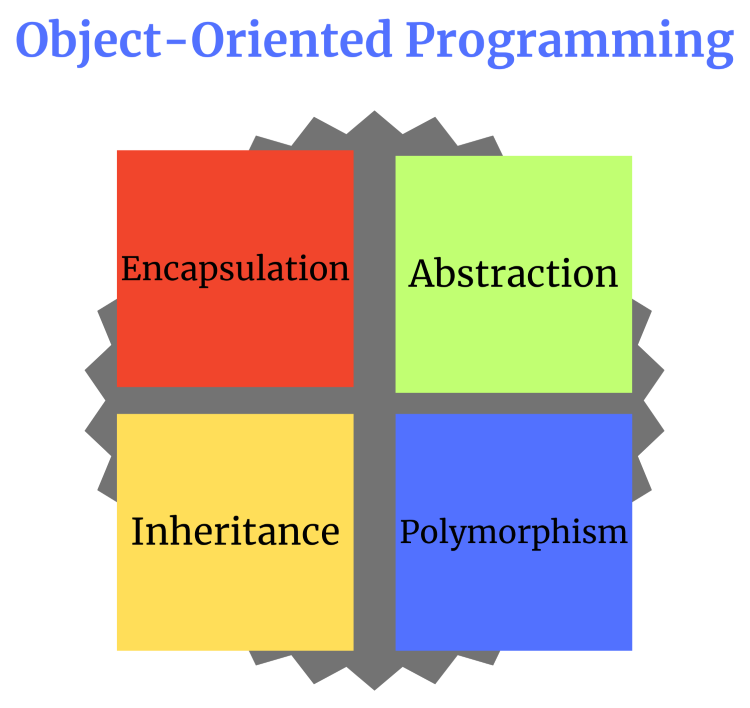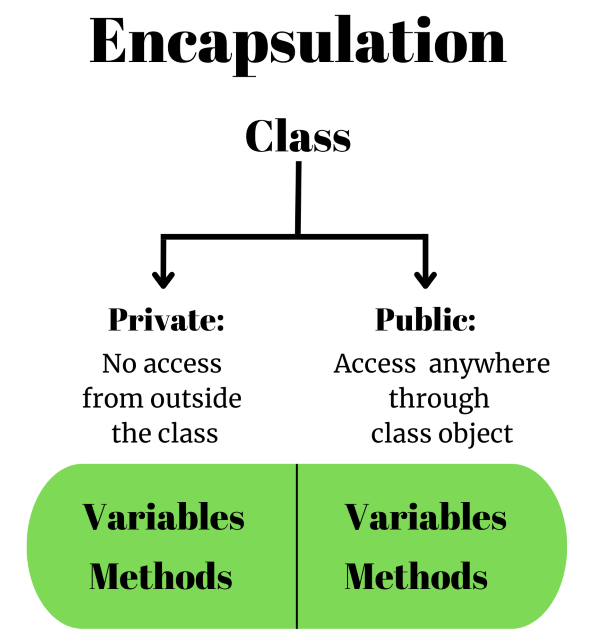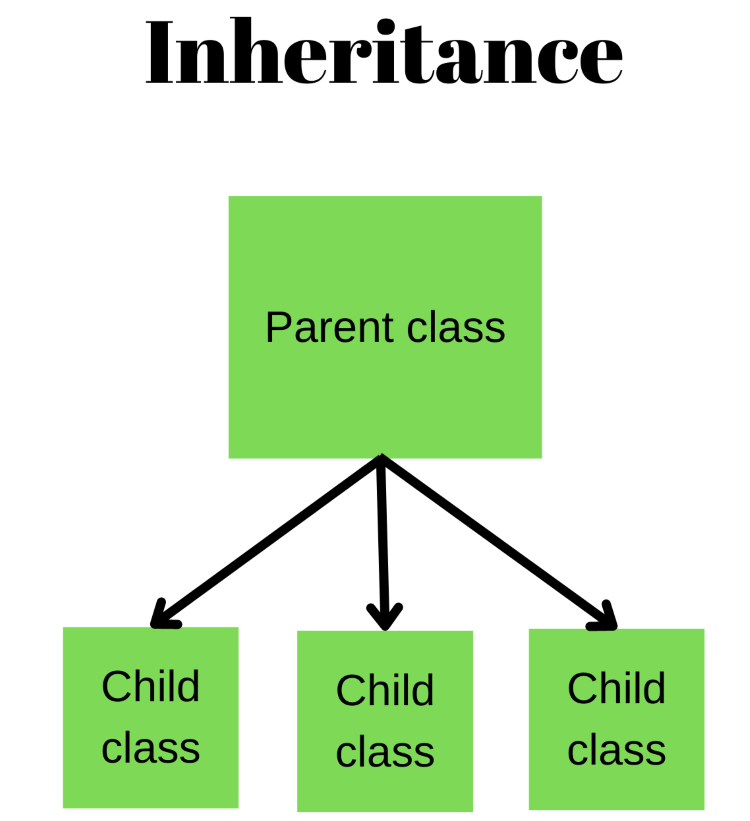
Understanding MQL5 Object-Oriented Programming (OOP)
Introduction
In this article, we will share one of the most important topics in programming which lead to coding smoothly and easily, and help us to apply the concept of (DRY) which is the shortcut of (Do Not Repeat Yourself) as developers or programmers. In addition to raising the security of any created software, and other of features. We will talk about Object-Oriented Programming (OOP) and how we can use this concept and code it in MQL5 (MetaQuotes Language) by understanding the basics of OOP first, then understanding how to use it in MQL5 by seeing some applications.
So, we will cover this interesting and important topic through the following three points:
The main objective of this article is to understand basics of the Object-Oriented Programming (OOP) in general and how it can be useful in software creation. From there, we will learn how we can apply this approach in MQL5 to use what may help us to create more effective and secure software by applying this incredible approach.
It will be very useful for anyone to learn more about this OOP approach there are very important and informative resources about this approach in general especially since it is applicable in other programming languages like C++, Java, Python, and others. In the MQL5 language, there is a very important resource not only in the topic of the article but every single topic in the MQL5 language which is the MQL5 documentation you can check the topic of the OOP through the link of MQL5 OOP Documentation.
What is the OOP
In this topic we will learn the basics of OOP in general so, let us start with this interesting topic by defining the OOP. OOP is short for Object-Oriented Programming and it is a paradigm of computer programming, It helps to create and develop reusable software smoothly without duplicated work and code and this helps us to apply the DRY (Do not Repeat Yourself) concept.
As we will see the OOP helps us to get closer to the nature of the world because everything around us is created by objects and each one has its nature and behavior and this is what we can do with our data in the software. If we want to dive more into the OOP we need to know that we will deal with objects and classes, the object means an instance of a Class and the Class is a template for the object. Inside the template which is the class, we define the behavior of this object in detail.
Basic concepts of OOP:
When we apply the OOP in software, the following principles will be applied.
- Encapsulation.
- Abstraction.
- Inheritance.
- Polymorphism.

1- Encapsulation:
Encapsulation is the method that enables to link of functions and data in one class, the data and functions in the class can be private which will be accessible only within the class or it can be public which will be accessible outside the class. The Encapsulation concept helps to hide the complexity of the class implementation and gives the developer full control of his data, helping to keep track of all values which rely on others without conflict.
So, we can say that Encapsulation helps to keep our system up and running and avoid a lot of possible errors in addition to giving a high level of control for the developer and helping in testing and processing classes data smoother and easier without affecting or changing the whole code of the software. According to what mentioned it helps also to solve errors and prevent to be coding complicated.
The following picture represents the Encapsulation concept:

2- Abstraction:
Abstraction is the method of hiding unnecessary details and presenting only the essential details. it is broader than the Encapsulation concept but it helps to achieve the same objective of it protecting data and implementing functions without knowing all things about the process of implementation of all classes but only knowing what I need to do to let the implementation be done.
To do that we need to include two important methods the Interface and the Implementation. The interface is the method that let classes interact and deal with each other but the Implementation is the method that has all details of the code or the logic of classes details. So, Abstraction helps to raise the security of the software and helps also to not repeat our coding process or recode from scratch but only develop and code more Apps based on the well create one.
3- Inheritance:
From its name the Inheritance concept means that we derived a new class from an old one and the new one inherits features of the old one in this case the old one is called a parent or superclass and the newly derived one is called the child class. This concept helps to apply the concept of DRY (Do not Repeat Yourself) but provides the main idea of reusability.

4- Polymorphism:
From the name of this concept if we divide the word two segments we will find (Poly) means many or multiple and (Morphism) means the form which means that the Polymorphism concept means that it helps an entity to be able to behave in many or multiple forms for example if we have a Sum method that can be able to behave differently like one that can be able to get the summation of (a) and (b) variables and another one that can be able to get the summation also but for different parameters like (a), (b), and (c).
Simply, Polymorphism means one interface and many or multiple methods.
We can summarize what we mentioned that the OOP is a computer programming model that focuses on organizing the design of the software through objects that can have unique behavior and characteristics and this is a helpful method in large and complex software especially if this software is updated and manipulated a lot.
OOP attributes and features:
- Software that applies the OOP approach includes classes and functions.
- The high level of security as data is hidden by applying the encapsulation and abstraction principles.
- It helps to work on complex projects easily as code can be divided into small blocks of code and this can decrease the complexity of the project.
- Update and development processes are easier.
- Reusability of code by applying the inheritance principle.
- Ability to create many instances of the same class without conflict.
We can find many programming languages that have the ability to apply the OOP approach and the most popular are for example C++, C#, Python, Java, JavaScript, PHP, and others. From these languages that we can apply the OOP approach is the MQL5 language and this is what we learn about through the following topic.
OOP in MQL5
In this topic, we will learn about the OOP in MQL5 and how we can use it. The same as we mentioned as basics of the OOP that we create a class to be like a blueprint for an object and the class itself is a collection or contains variables and methods which the same as a function but it is called a method in the class to perform a specific set of tasks. It is good also to mention here that variables and methods or functions inside the class are called class members. What we need to say here is that it is a good and appreciated effort that applying the OOP concept is available in MQL5 as it will save a lot of effort and works as we mentioned in addition to the quality and security.
If we need to apply the OOP concept in MQL5 we need to understand how we can use the following in MQL5:
- Classes
- Access Modifier
- Constructors and Destructors
- Derived (Child) Classes
- Virtual Functions
- Objects
Classes:
In the MQL5, if we need to create a class to be a blueprint of an object we need to declare this class on the global scope the same as functions. We can create this class by using the class keyword followed by the desired unique then between or inside the two curly brackets we can place our variables and methods which are members of the class then after the second curly bracket we place a semicolon to terminate the class declaration. By the way, we can use this class declaration in the program or in the include file.
The following is an example of this class declaration:
class Cobject { int var1; // variable1 double var2; // variable1 void method1(); // Method or function1 };
As we can see in the previous example we have three members of the class and they are two variables and one method or function.
Access Modifiers:
By these Access Modifiers, we can determine what variables and functions we can use outside the class and we have three access keywords which are public, private, and protected.
- Public: represents members that can be available for use outside the class.
- Private: represents members that cannot be available for use outside the class but are only available for use inside the class by functions. The child class of this class will not inherit these private members.
- Protected: represents members that will be inherited by child classes but they are private by nature.
If we need to see an example of that we can see the following one:
class Cobject { private: int var1; // variable1 protected: double var2; // variable1 public: void method1(); // Method or function1 };
As we can see in the previous example we have three members in the class with two variables one is private and the other one is protected and the third member is public.
Constructors and Destructors:
If we need to initialize variables in the class we use the constructor. It will be created by default by the compiler if we did not but this default constructor will not be visible. It also must be public as per the accessibility. On the other hand, The Destructor is an automatically called function when a class object is destroyed. We can call the destructor the same as the class name with a tilde (~). Whether the destructor is exist or not, the string, dynamic array, and object are requiring deinitialization so they will be de-initialized anyway.
The following is an example of a Constructor:
class CPrices { private: double open; // Open price double high; // High price double low; // Low price double close; // Close price public: //--- Default constructor CPrices(void); //--- Parametric constructor CPrices(double o,double h,double l, double c); };
Derived (Child) Classes:
As we learned before that the inheritance concept is one of the most valuable and useful features of the OOP because we can create a child class from a super or parent class and this child class inherits all members of the parent class except private members. After that, we can add new variables and functions for that child class.
If we need to see an example we can see that through the following one, if we have a parent class for prices we can create a child one for daily prices the same as the following:
class CDailyPrices : public CPrices { public: double open; // Open price double high; // High price double low; // Low price double close; // Close price };
As we can see the parent class name is CPrices and CDailyPrices is the child or derived one. Now, we find all of the public and protected members of CPrices are part of the CDailyPrices class and they are still public.
Virtual Functions:
If we want to update the way a method or function operates in a child class we can do that by using the (virtual) function in the parent class then we define the function in the child class. For example, if we have two different versions of a function based on the class. For the parent class, we define the function using the virtual keyword
class CVar { public: virtual void varCal(); };
Then we will update the same function in the child class
class CVar1 : public CVar { public: int varCal(int x, int y); };
Objects:
Objects are the unique identifier the same as we do when creating a variable, we will use the class name as a type before the object identifier. We can create many objects belonging to our classes as we need for the project all we need is to use a unique identifier for everyone. After declaring the object we can access any public member by using the (.) which is the dot.
Let's see an example to understand that clearly if we create a class that has an integer variable of the number of trades (num_trades)
class CSystrades { public: int num_trades; };
Then we need to create an object belonging to this class called system1, we will do that by doing the same as the following
CSystrades system1;
Then we can define this object by the (3) value the same as the following
system1.num_trades=3; Now, we understood how we can apply the OOP approach in MQL5 by learning some of the most important ideas around that in this topic.
OOP applications
In this interesting part we will present some simple applications of applying the OOP approach in our software to well understand how we can use it and how much it can be useful.
priceClass application:
In this simple application, we need to check prices of multi-time frames and in this example, we will present three-time frames (daily, weekly, and monthly) here we need to see all prices also (open, high, low, close) we need to see them in one place let say in Experts tab. After that, we can develop more in this simple example to implement more advanced software.
First, we need to declare the class through the following step:
- We need to declare a class for prices in the global scope and include all common members as public by using the class keyword.
- Use the public keyword.
- Create five variables (timeframe, open, high, low, and close).
- Create a void function to print all price data.
class CPrices { public: string timeFrame; double open; double high; double low; double close; void pricesPrint() { Print(timeFrame," Prices = Open: ",open," - ","High: ",high,"-","Low: ",low,"-","Close: ",close); } };
Create objects from the class for daily, weekly, and monthly prices
CPrices CDailyPrices; CPrices CWeeklyPrices; CPrices CMonthlyPrices;
Inside the OnInit function, we will define the following for the three-time frames:
- Defining the string time frame.
- Defining the open price using the iOpen function.
- Defining the high price using the iHigh function.
- Defining the low price using the iLow function.
- Defining the close price using the iClose function.
- Calling the printing function or method.
int OnInit() { //--- Daily time frame CDailyPrices.timeFrame="Daily"; CDailyPrices.open=(iOpen(Symbol(),PERIOD_D1,1)); CDailyPrices.high=(iHigh(Symbol(),PERIOD_D1,1)); CDailyPrices.low=(iLow(Symbol(),PERIOD_D1,1)); CDailyPrices.close=(iClose(Symbol(),PERIOD_D1,1)); CDailyPrices.pricesPrint(); //--- Weekly time frame CWeeklyPrices.timeFrame="Weekly"; CWeeklyPrices.open=(iOpen(Symbol(),PERIOD_W1,1)); CWeeklyPrices.high=(iHigh(Symbol(),PERIOD_W1,1)); CWeeklyPrices.low=(iLow(Symbol(),PERIOD_W1,1)); CWeeklyPrices.close=(iClose(Symbol(),PERIOD_W1,1)); CWeeklyPrices.pricesPrint(); //--- Monthly time frame CMonthlyPrices.timeFrame="Monthly"; CMonthlyPrices.open=(iOpen(Symbol(),PERIOD_MN1,1)); CMonthlyPrices.high=(iHigh(Symbol(),PERIOD_MN1,1)); CMonthlyPrices.low=(iLow(Symbol(),PERIOD_MN1,1)); CMonthlyPrices.close=(iClose(Symbol(),PERIOD_MN1,1)); CMonthlyPrices.pricesPrint(); return(INIT_SUCCEEDED); }
After that, we can find the prices printed after executing this expert in the Experts tab from the toolbox the same as the following:

As we can see in the previous picture we have three printed lines:
- The first line prints the daily prices of open, high, low, and close.
- The second prints the same prices but belongs to the weekly data.
- The third line prints the same also but belongs to the monthly data.
indicatorClass application:
We need to create software that can be able to print values of four moving average types (Simple, Exponential, Smoothed, and Linear-weighted averages) using the OOP approach the following are simple steps to create this type of software:
Declare the indicator CiMA class by using the class keyword and create public members of this class they are four common variables of MAType to define the type of the moving average, MAArray to define the array of the moving average, MAHandle to define the handle of every type, MAValue to define the value of every moving average. Create a void method or function of valuePrint and the body of the function to print the value of every moving average type.
class CiMA { public: string MAType; double MAArray[]; int MAHandle; double MAValue; void valuePrint() { Print(MAType," Current Value: ",MAValue); }; };
Create the following objects of every moving average from the class:
- The name of average
- The handle of average
- The array of average
//--- SMA CiMA CSma; CiMA CSmaHandle; CiMA CSmaArray; //--- EMA CiMA CEma; CiMA CEmaHandle; CiMA CEmaArray; //--- SMMA CiMA CSmma; CiMA CSmmaHandle; CiMA CSmmaArray; //--- LWMA CiMA CLwma; CiMA CLwmaHandle; CiMA CLwmaArray;
Inside the OnInit function we will do the following steps for every moving average type:
- Define the name of the average.
- Define the handle of the average.
- Setting the AS_SERIES flag to the array by using the ArraySetAsSeries.
- Getting the data of the buffer pf the average indicator by using the CopyBuffer function.
- Define the value of the average and normalize it by using the NormalizeDouble function.
- Calling the Print created method or function
int OnInit() { //--- SMA CSma.MAType="Simple MA"; CSmaHandle.MAHandle=iMA(_Symbol,PERIOD_CURRENT,10,0,MODE_SMA,PRICE_CLOSE); ArraySetAsSeries(CSmaArray.MAArray,true); CopyBuffer(CSmaHandle.MAHandle,0,0,3,CSmaArray.MAArray); CSma.MAValue=NormalizeDouble(CSmaArray.MAArray[1],_Digits); CSma.valuePrint(); //--- EMA CEma.MAType="Exponential MA"; CEmaHandle.MAHandle=iMA(_Symbol,PERIOD_CURRENT,10,0,MODE_EMA,PRICE_CLOSE); ArraySetAsSeries(CEmaArray.MAArray,true); CopyBuffer(CEmaHandle.MAHandle,0,0,3,CEmaArray.MAArray); CEma.MAValue=NormalizeDouble(CEmaArray.MAArray[1],_Digits); CEma.valuePrint(); //--- SMMA CSmma.MAType="Smoothed MA"; CSmmaHandle.MAHandle=iMA(_Symbol,PERIOD_CURRENT,10,0,MODE_SMMA,PRICE_CLOSE); ArraySetAsSeries(CSmmaArray.MAArray,true); CopyBuffer(CSmmaHandle.MAHandle,0,0,3,CSmmaArray.MAArray); CSmma.MAValue=NormalizeDouble(CSmmaArray.MAArray[1],_Digits); CSmma.valuePrint(); //--- LWMA CLwma.MAType="Linear-weighted MA"; CLwmaHandle.MAHandle=iMA(_Symbol,PERIOD_CURRENT,10,0,MODE_LWMA,PRICE_CLOSE); ArraySetAsSeries(CLwmaArray.MAArray,true); CopyBuffer(CLwmaHandle.MAHandle,0,0,3,CLwmaArray.MAArray); CLwma.MAValue=NormalizeDouble(CLwmaArray.MAArray[1],_Digits); CLwma.valuePrint(); return(INIT_SUCCEEDED); }
After compiling and executing this code we can find four lines for every type of moving average each line printing the value of the average the same as the following:

As I mentioned before that we can develop these applications to implement more complicated and advanced tasks but here the objective is to learn and understand basics of the Object-Oriented Programming (OOP) and how we can apply this approach in MQL5 because there are many features that we can get when applying this useful approach.
Conclusion
In this article, we learned the basics of a very important topic and approach in programming in general. We learned how much this approach is very useful when designing our software through learning how can help us to create safe and highly secured software, helps to decrease the complexity of creating the software by dividing the code into small blocks of code which makes the coding process easier, helps also in creating many instances from the same class without any conflict even if has different behavior and all of that give more flexibility and safety when updating our software.
We learned also how to apply this important approach in MQL5 to get all these incredible features then learned some simple applications that can be created by applying the OOP approach in MQL5 to be used in the MetaTrader 5.
I hope that you find this article useful for you and helped you to learn a very important and crucial topic in MQL5 programming as it may give you more insights about how many ideas can be easy when coding it after applying this OOP approach.
If you liked this article and you want to learn more about how you can create trading systems in MQL5 to be used in the MetaTrader 5 based on the most popular technical indicator and how you can create a custom technical indicator and use it in your Expert Advisor you can read my other articles about these topics through the publication on my profile and I hope that you find them useful as well.
- Free trading apps
- Over 8,000 signals for copying
- Economic news for exploring financial markets
You agree to website policy and terms of use